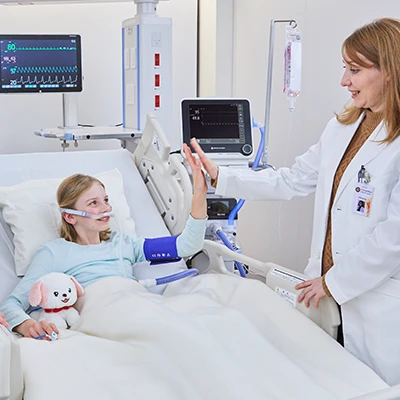

Gentle Lung®

Gentle Lung® Package for Lung Protection
Patients under mechanical ventilation may suffer from ventilator-induced lung injury (VILI). This may be caused by inappropriate tidal volume (ARDSnet), inappropriate driving pressure (Amato, et al. NEJM 2015), and inappropriate PEEP (Briel M, et al. JAMA. 2010). Lung protective ventilation is a well established practice not only in ARDS patients but also in postoperative patients (Kacmarek Anesthesiology 2018).
The NKV-550 ventilator offers the Gentle Lung® package, which consists of four convenient tools for clinicians to practice lung protective ventilation:
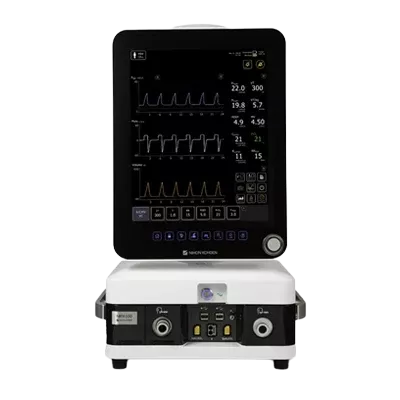

The NKV-550 Series Ventilator System is a comprehensive neonatal through adult mechanical ventilator. Relying on clinically proven modalities and features, the NKV-550 provides the clinician a highly customizable platform to help improve the outcome of the patients they care for while reducing hospital costs.
Features of App
Recruitability Assessment App: Determine Whether Your Patient Will Benefit From Lung Recruitment
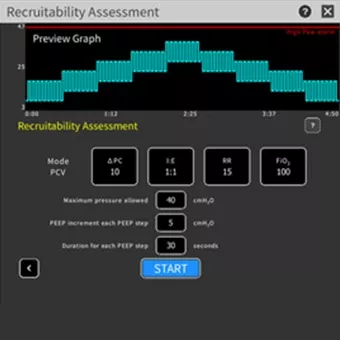
This app provides a guided tool for clinicians to quickly assess whether or not a particular patient will benefit from lung recruitment. The tool is easy to use. At the end of the procedure, the ventilator will display recruitable lung volume and gain in compliance.
Recruitment Maneuver App: Offers You a Tool to Conveniently Recruit Lungs
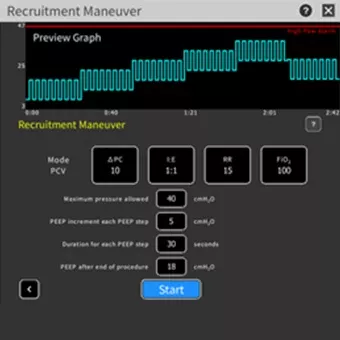
This app provides a guided tool for clinicians to recruit the patient’s lungs. By setting a few parameters in this app, clinicians can allow the ventilator to execute the recruitment maneuver during which the ventilator will ventilate the patient while increasing the PEEP step-by-step, eventually elevating the airway pressure to such a level that the collapsed lungs are recruited (i.e., re-opened). At the end of the procedure, the ventilator can resume normal ventilation or transition to PEEP titration, depending on the clinician’s choice.
PEEP Titration App: Titrate PEEP for Your PEEP
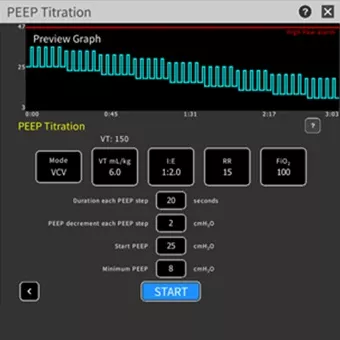
This app allows clinicians to perform a decremental PEEP titration maneuver to help identify the lowest PEEP that provides the highest lung compliance. At the end of the procedure, clinicians can either resume normal ventilation or select Recruitment Maneuver.
Transpulmonary Pressure App: Measure the Driving Pressure of Your Patient
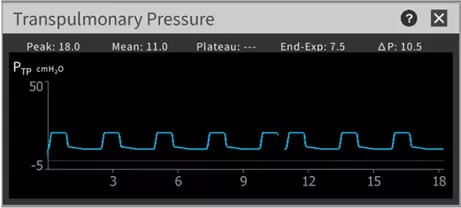
This app allows clinicians to conveniently monitor the transpulmonary pressure (P-tp) of a ventilated patient. In addition to the real time P-tp waveform, the app measures the peak value, mean value, plateau value and end expiratory value of transpulmonary pressure. The app also measures the driving pressure, which is the inflation pressure of transpulmonary pressure. Talmor et al have found that adjusting the PEEP setting to achieve an end expiratory transpulmonary pressure of 0 to 10 cm H2O significantly improved oxygenation and respiratory compliance in patients with ARDS (Talmor NEJM 2008). Amato, et al. has found that among all variables, driving pressure is the variable that is most strongly associated with patient survival in ARDS patients (Amato, et al. NEJM 2015).

